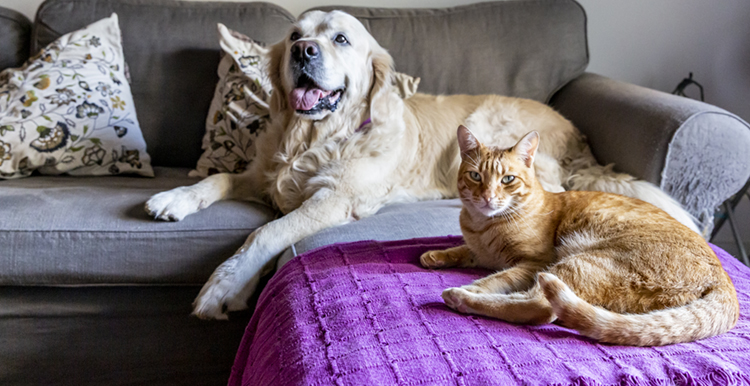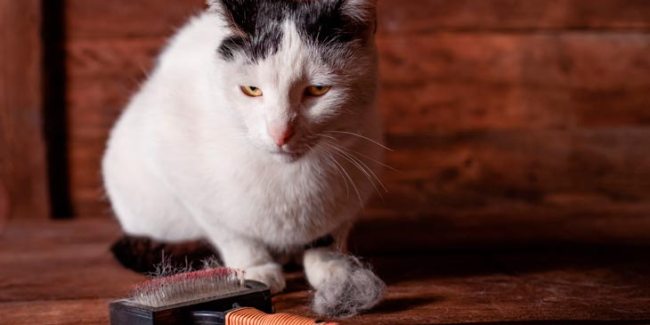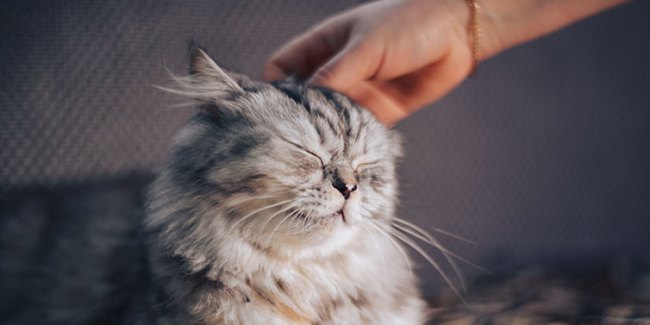Safety in the Home – for Furry Friends
Did you know that interaction with animals can lower our heart rate and blood pressure (a good thing), and ease anxiety, stress and depression? And, of course, they give us their unconditional love, loyalty and companionship. In return, all they ask is that we provide shelter, food, basic care and safety from harm. Sounds like a bargain, right? One of the things we need to take care of is to ensure that our beloved pets are safe in our homes. Many animal owners spend a fortune on food, toys, beds and their animals’ health, when their homes are ticking time-bombs for their furry companions. This doesn’t make much sense, does it?

Dogs and cats are very intelligent animals and with intelligence comes curiosity, just like your average toddler. The expression, ‘Curiosity killed the cat’, will come as no surprise to cat owners who may have to check their washing machines for Fluffikins before filling it with clothes. Similarly, imagine the horror of the owner of a new puppy who, on returning home, finds an empty and chewed pill packet on the floor. Both situations and similar scenarios are surprisingly common and in addition to the suffering of the animal, anxiety and cost of a visit to the vet, is the possibility that such situations can, sadly, result in great heartache and grief.
So, what can be done to prevent such things from happening? Quite a lot, actually. Let’s have a look at some preventative measures you can take.
Food Safety
We have ALL fallen into the trap of those pleading eyes, watching us as we drink or eat a meal.
“Come look at Bonzo, guys! Check how he enjoys his beer!”
“I always give Tizer a piece of my pizza when he’s been a good boy.”
Both of these items are potentially lethal to dogs: beer contains alcohol and pizza may contain onions, garlic, salt, yeast dough, mushrooms, avocados, all of which are toxic to dogs, even in very small quantities.
Here’s a list of foods which are harmful to your pets:
- Alcohol
- Mushrooms
- Garlic
- Food which may be slightly ‘off’
- Yeast dough
- Most nuts
- Avocados
- Coffee
- Chocolate
- Raw meat and raw eggs
- Raw and cooked bones (May stick in the throat and cause choking.)
- Artificial sweeteners, eg Xylitol
- Onions
- Chives
- Leeks
- Chewing gum and many sweets
- Toothpaste (You never know with curious puppies and kittens!)
- Cat food – should not be fed to dogs as the protein content is too high
- All medication intended for humans
- Tobacco
If you are at all worried that your pet may have eaten something harmful: CALL YOUR VET.
Common Dangers in the Home

The following is a list of items, commonly found in the home, which are dangerous for pets. NEVER give any animal any of these items to play with. Keep them in locked/inaccessible places. Remember that cats can climb.
- Sharp items such as razors, knives etc
- Exposed electrical cables/cords
- Small items which could cause choking
- Household cleaners and detergents
- Anti-freeze (For some reason, dogs find this particularly delicious but it is toxic to them.)
- Rat poison and traps
- Insecticides
- Fertilizers and plant food
- Batteries
- Any medication, whether for humans or animals, should be locked up
- Mothballs
- Kerosene
- Rubber bands, string, dental floss
Pet-proofing Your Home
So now that you’re aware of items which may cause serious illness and even prove to be fatal to your pets, how can you ensure that your beloved furries do not come in contact with them?
First of all, you need to take a good look around your home, garden and yard from the point-of-view of your pets. Whilst we are not suggesting that you crawl around your home on your hands and knees (Although you could!), you need to look from your animals’ perspective. Dogs, at least, have limitations with regard to how high they can climb; kitties, to a great extent, do not.
Look out for small items lying around that could cause your pets to choke. If you have small children, they will inevitably leave small toys around. Puppies in particular will find these very chewable and may bite pieces off them which may injure their throats or even cause choking. You can’t trust small children to clean up properly!

The Kitchen
This may be the most potentially dangerous room in your house for your pets. The easiest way to ensure that your kitchen is safe for them is to prevent access. Easier said than done? Maybe, but pet-proof gates can prevent access to SOME pets. Kitty, of course, will laugh at your attempt to keep him/her out.
- Rubbish bins
Let’s face it, your dog probably eats FAR more disgusting stuff than the rotting food in your rubbish bin. They may go to great lengths to get at it. Cooked chicken bones, for example, are very appealing to animals, but they splinter and may pierce the digestive tract if swallowed. Make sure your bin has a secure, pet-proof lid. There may be items in there which, without you realizing it, are harmful or toxic to animals.
- Kitchen cupboards
Most animals will not be able to open cupboard doors, unless they are particularly gifted and have won ‘America’s Got Talent’. However, better to be safe than sorry. Simple child-proof locks should do the trick. Once your cupboard doors are secured, you won’t need to worry about the detergents and floor cleaners inside.
- Large appliances
Some cats love to sleep in washing machines and dryers. Always keep the doors of these appliances firmly closed and make a habit of checking inside before you throw your washing in and switch on.
- The stove
Cats have been known to step onto hot-plates which have been switched on. Watch for pots containing boiling liquids – they can spill and cause scalds if this falls on one of your pets. To be safe, try to keep your pets out of the kitchen while you cook.
The Bathroom

- Medicines
Whether prescription or over-the-counter, all medicines, whether for humans or animals, need to be inaccessible to your pets. We suggest keeping these in a locked cupboard or cabinet, mounted on the wall, out of reach of pets and, of course, children.
- Toilets
Some pets like to drink the water in a toilet. Go figure! Not only is this unhygienic, but there are often chemicals in the water which may be toxic to animals. Make sure that you always provide a supply of clean water for your pets to drink. Always keep the lid of your toilet down and impress this on your family. (Good luck with that!)
Other Rooms
- Electrical cables
You may be saying to yourself: ‘Oh, I can keep a careful eye on these things. There’s no chance of Tizer or Muffikins chewing a cable.’ What about when you’re out? Or even busy in another room? An electric shock can kill a human, never mind an animal. The solution to this particular problem is not so easy. You can try to keep all cables off the ground; you can block them with furniture; you can tape them to skirting boards or walls or you can buy special cord covers. At least, when you leave animals alone in your house, ensure that all plugs to accessible cables, are switched off. Always ensure that appliances cannot be pulled over or off furniture by their electric cables or cords.
- Cupboards and drawers
Bored dogs, and even cats sometimes, can get into unlocked/unsecured cupboard doors and wreak havoc. Many of us have stories of expensive shoes being ruined by a puppy. (Why do they find shoes, especially expensive ones, so yummy?) There may also be items in cupboards and drawers which are dangerous and/or toxic to animals. Keep all cupboards and drawers securely closed.
The Garage
- Chemicals
Most garages are used to store various chemicals for cars and for the home and most of these are toxic to pets and humans. Anti-freeze, as we mentioned before, tastes yummy to dogs, and they can be seriously poisoned by licking up a spill. Ensure that all spills, of all chemicals, are carefully mopped up. Keep all chemicals in inaccessible cupboards or secure, preferably lockable, containers.
- Tools
Most tools can be hazardous to pets, especially if they have sharp edges or sharp points. Smaller items may be swallowed and may cause choking. All tools, nails and screws should be out of reach of your animals. They should be kept in secure toolboxes or cupboards.
The Garden

- Fencing
A secure and strong fence or a wall, is obviously vitally important to contain your canine companions. There are dangers outside its perimeter, including traffic, pet thieves and other dogs, which may not be secured. There is also the very real danger that your pets, once outside of the familiar territory of your garden, may get lost. Ensure that your fence is completely secure and repair it if it isn’t. Remember too that some dogs are escape artists and can dig themselves out of the security of your garden. There are products you can buy which prevent Tizer from digging under the fence. Also make sure that all pets are micro-chipped or have a GPS device, in case they manage to escape.
- Fertilizers and Poisons
Fertilizers contain many chemicals which are potentially toxic to animals. They may eat these especially if they are mixed with bone meal which is very smelly and attractive to dogs. Preferably use organic products like manure and compost, which have the added advantage of not being harmful to the environment. Try to find alternatives to poisonous weed-killers and pest control substances like ant and slug poisons. These can remain on surfaces long enough for dogs and cats to lick them. Also bear in mind that children play in gardens too.
- Other hazards
Ensure that your pets cannot access your braai grill when it is still hot. The smell of bits of burnt meat and fat is irresistible to them, but can result in serious and painful burns.
Balconies and upper-storey rooms
Dogs and cats can, and do, fall from balconies and windows in upper-storey rooms and apartment blocks. You need to ensure that any wall or fence around your balcony is high enough to prevent your pet from falling. Cats can also fall but unless you completely enclose your balcony there is little you can do to prevent this.
For high windows, you can buy cat and dog-proof screens, which double as insect screens. These need to be carefully installed and will allow you to open your windows in hot weather without worrying whether your pet can fall out and suffer serious injuries.
Poisonous plants

Many pet owners are blissfully unaware that they may be nurturing certain plants in their homes and gardens which are toxic to their pets. Surely any animal would not deliberately eat a plant which is poisonous to them? Well, they do, and some have died.
It is not possible to list every plant which may be toxic to your animals, so if you are unsure: CHECK ONLINE OR ASK YOUR VET.
Here are the main culprits:
Outdoor plants which are poisonous to pets
- Lilies
Dangerous lilies include: Day, Tiger, Asiatic, Easter, Japanese Show, Stargazer.
In some cases, these lilies are highly toxic to cats. Even a couple of leaves or petals can cause serious kidney failure.
- Sago Palm
This is a very popular plant in South Africa, but unfortunately, animals like to chew on its leaves. This can cause liver failure which may prove fatal.
- Blue-green algae
Keep your pet away from any water which contains algae. They are microscopic bacteria which are toxic to humans and animals. They can cause severe liver failure in animals which can cause death in a few hours. It’s impossible to know whether the algae in your pond is the poisonous kind or not without laboratory analysis. Either ensure that all ponds and water features are kept clean or get rid of them.
- Plants containing cardiac glycosides
These include: Milkweed, Kalanchoe, Oleander, Lilies of the Valley, Dogbane and Foxgloves. Scientists have used ingredients in these plants to create important life-saving heart medicines for animals and humans. However, cats and dogs can be poisoned and suffer life-threatening conditions if they eat them.
Indoor plants which are poisonous to pets
- Spring bulbs
Daffodils, Hyacinths and Tulips can cause diarrhoea and vomiting if pets eat them. However, if a large amount of the bulbs are eaten, this can cause a blockage in the animal’s digestive system and an elevated heart and breathing rate, or a drop in blood pressure.
- The Araceae family
These include many of your favourite plants, unfortunately: Mother-in-law’s Tongue, Elephant Ear, Umbrella plant, Sweetheart Vine, Calla Lily, Peace Lily, Philodendron, Arrowhead Vine, Pothos. If an animal chews on these, he/she will experience severe pain in the mouth which can cause drooling, a swollen muzzle and lips and sometimes vomiting. These plants are not life-threatening and symptoms may be alleviated by giving her/him milk or yoghurt.
- Rhubarb leaves, three-leaved plants (eg Clovers), Starfruit.
Eating these plants causes calcium levels in the blood to drop suddenly and crystals to form in the kidneys which results in kidney failure. Your pet may drool, vomit, become lethargic, experience tremors and abnormal urination. Poisonings involving these plants are rare but if you suspect your pet has eaten one, contact your vet immediately.
- Kalanchoe
This is a beautiful and common houseplant in South Africa, also known as Devil’s Backbone, the Chandelier plant and Mother of Millions. Unfortunately, it contains poisons which are called cardiac glycoside toxins which alter the chemical balance in the heart. If you suspect that your pet may have eaten some of this plant, call your vet immediately.
- Corn plant, Dragon tree
Ingestion of this plant is not usually life-threatening but can cause drooling, vomiting, weakness, lack of coordination and dilated pupils in cats. If in doubt, contact your vet.
N.B. The above lists of poisonous plants are not necessarily exhaustive.
And finally ….
Always remember: If, in spite of your best efforts to ensure that your home and garden are safe for your beloved furry friends, your pet is injured or possibly poisoned, contact your vet.
Sources:
ZA-XXX

Subscribe to our Newsletter
Get to know your furry friend better! Sign up for all things dog- or cat-related.
The Hairy Facts about the dreaded hairball
12 April 2021
Help! My dog’s barking mad! Volume 2
12 April 2021
Your Itchy, Scratchy Cat – All About Cat Skin Problems
12 April 2021
The Dog’s Diet: A Bone of contention?
01 April 2021
Mango Fly Worms: How to Spot and Eliminate them
Posted on November 28,2019
Managing Mange And Mites In Your Dog
Posted on June 11,2018
Why Do Cats Purr and How? Learn What Your Cat Is Saying
Posted on October 14,2020
How to Get Rid of Ear Mites in Dogs
Posted on November 06,2019









